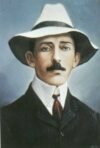COWL FLAPS AND ENGINE COOLING
PURPOSE OF THIS MANUAL
The purpose of this manual is to advise simulator pilots of some of the ways cowl flaps and other devices are used to cool piston-powered aircraft engines.
DEFINITIONS
First off the cowl, or cowling, is the sheet metal that surrounds the engine of an aircraft. Cowl flaps are "doors" that are adjusted to control the cooling air that flows through the cowling.
INTERNAL ENGINE COOLING
Engine cooling on piston-powered aircraft can be a black science sometimes. Like most everything else in aviation it is a compromise. The designers of the airframe are mostly concerned with appearance and speed while the designers of the engine/s are mostly concerned with the operating environment of their product.
Interestingly the engine(s) are usually certified without the cowling of the aircraft they ultimately end up being installed in. In most cases it is up to the airframe manufacturer to design the engine cowling so that the engine is properly cooled.
You can see the immediate conflict here. The engine manufacturer wants lots of air flowing past his engine for proper cooling. The aircraft manufacturer wants the cowling to be as tight as possible for appearance and less drag. In almost all cases, inasmuch as the aircraft manufacturer designs the cowling, the latter wins. And from here on in it is the pilot that will pay the price for this "feud" as he struggles to keep his engines in the correct operating temperature range.
In addition to the cowling, which is the most visible item, there usually is an extensive amount of internal baffling that directs cooling ram air to where it is needed and prevents it from going where it is not. Many times tubes branch out to direct air to specific locations and accessories.
Many of the edges of this baffling have seals that fit against the cowling. When the cowling is replaced after engine maintenance it can be critical to proper cooling that the seals be orientated in the proper direction.
As an aside, these various items are usually made of light weight aluminum and are the recipients of many cracks from heating/cooling cycles and vibration. An examination of an aircraft engine with any time on it will reveal a plethora of riveted patches and stop-drilled holes to prevent cracks from extending any farther.
Also there are oil coolers on many aircraft, especially the turbocharged editions. These are much like the radiator transmission coolers on your car in that they are placed out in the air flow for heat exchange purposes. There are some older aircraft that have "doors" or bypasses for these coolers so that the pilot has control over his oil temperatures.
COWL FLAPS
Usually cowl flaps are doors that are located on the bottom of the cowling, located either inside or outside. They are in this location because that is usually the end of the path for the cooling air flow. These doors are opened and closed by the pilot from the cockpit. Usually they are manual and are operated by a lever or a knob. In some cases they are electric and are opened and closed by a switch.
On radial engines you can see the cowl flaps as a ring of individual doors surrounding the rear of the cowling. Some aircraft utilize a series of baffles and louvers to maintain proper cooling. The Cessna 421B had cowl flaps in the "A" model but they were dispensed with in the "B" and "C" models because Cessna engineers were able to redesign the cowling for better cooling without the need of flaps.
ENGINE COOLING ON THE GROUND
Given the above information you can see that engine cooling is designed to operate properly in the air. Ground operation is a necessary evil, a means to an end. Given this you can see that the pilot must closely monitor engine temperatures until the aircraft is airborne and temperatures have had a chance to stabilize.
Good operating procedure requires that the pilot give some thought to how he will keep his engines cool before departure. During the winter this is usually not a problem. But, in the heat of summer in can be an item of some consideration. During hot weather operations many pilots will fire up their avionics bus and get their clearances before engine start-up. This will cut down on some unnecessary idle time, but as a courtesy you should advise Clearance Delivery or Ground Control that is what you are doing.
For example: "Clearance, Cessna 1557Golf instruments to O'Hare, Bravo (the current ATIS)". You receive and read back your clearance ending with "We'll contact Ground as soon as we have engine start up." This puts the people in the tower cab on notice that you are not ready for an immediate taxi clearance. (In most installations Clearance and Ground are sitting side by side- sometimes the same person.)
Also, you should look around the field (not possible at most major airports) and see if there are any situations that would prevent your expeditious departure. Old Charlie Fergusen might just be blocking the access to the runway while doing one of his infamous twenty minute run ups.
ENGINE START UP AND TAXI
Without any specific aircraft in mind this will, of course, be generic. Having the cowl flaps open will usually be a part of the pre-start check list. After engine start and during taxi to the active runway monitor engine temperatures. During cold weather operations the cowl flaps may be closed to aid in more rapid engine warm up, however this practice can lead to hot spots within the engine area. If you are delayed for any reason try to turn the aircraft into the wind for additional cooling. The propellers unfortunately do not provide much air flow as the cowling inlets are usually in the area of the propeller hubs.
If the engines start to approach red line temperatures your options are rather limited. If you shut down the cowling will retain the heat and fry the engines. On some aircraft increasing power may increase airflow, but at the same time will lead to higher temperatures- truly a Catch 22. This is all the more reason to plan your ground departure as much as practical during warm weather operations.
DEPARTURE
OK, you didn't get so hot on the ground that the engines were over heated and now you are on the runway. Cowl flaps are usually called for to be open on the take off check list. Apply power and away you go.
CLIMB OUT
During climb out monitor your engine temperatures. Once they have stabilized lean your mixtures in accordance with the Aircraft Operators Manual. The cowl flaps should be adjusted after the mixtures have been set. Close the cowl flaps as necessary to maintain proper engine temperatures.
ENGINE FAILURE, SINGLE-ENGINE OPERATION
In the event of an engine failure in a single-engine aircraft the cowl flaps are the least of your problems. If you are in for a prolonged glide closing them can clean up the aircraft and help to stretch the gliding distance.
In a multi-engine aircraft closing the cowl flaps on the inoperative engine is usually relegated to the "clean up items" check list. It is important that the extended cowl flaps be retracted on the inoperative engine because of the drag that they cause, but doing so quickly is not as important as the other items on a typical "in flight engine shut down" check list. The temperatures on the operating engine should be carefully monitored as it now will be operating near full power to help compensate for the loss of the other engine. In this situation the last thing you want to do is to introduce more drag into the equation, but it may become necessary if the operating engine is over heating. On the other hand, if the choice is cowl flaps open and don't make the airport vs cowl flaps closed, ruin the engine but make the airport then let the engine get ruined. While expensive, they can be replaced a lot easier than people can.
CRUISE
In cruise configuration the cowl flaps are normally closed after the engine temperatures have had a chance to stabilize.
LET DOWN
Usually the cowl flaps are left in the closed position during let down from cruise. The exception to this of course would be extremely hot weather conditions.
APPROACH AND LANDING
During this phase of operations the cowl flaps usually remain closed. It can vary though from aircraft to aircraft. Once again, the determining factor is the engine temperatures. A usual catch-all phrase on landing check lists is "Cowl flaps: Adjust as necessary for proper engine temperatures".
Thought should be given to the possibility of an aborted landing due to weather or a "ground event" that prevents landing. If a go around should become necessary apply power as required and adjust the cowl flaps as you would during a normal take off.
After landing, open the cowl flaps all of the way and permit the engines to start their cool down. After engine shut down it is best to leave the cowl flaps open to allow the engines to cool down without any hot spots retaining heat and possibly over heating any accessories.
Thank you.















